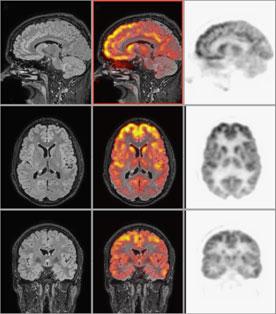
Radiology
Positron Emission Tomography/Computed Tomography (PET/CT)
What is PET/CT?
PET is a type of nuclear radiology, in which a small amount of radioactive material is injected into the body. It shows how an organ or part of the body functions.
When PET is combined with a CT scan, it produces an extremely accurate picture of what’s happening inside a child’s body. This accuracy can lead to more effective diagnosis or treatment.
Texas Children’s Hospital was one of the first hospitals in the world – and the first freestanding children’s hospital in North America – to install this leading-edge technology. PET/CT can allow for shorter imaging times, aligning with our commitment to keep radiation exposure as low as possible while maintaining optimum image quality for a more accurate diagnosis.
Our board-certified pediatric nuclear medicine doctors are extensively trained to conduct specialized tests especially for children. They’re supported by a highly skilled team as well as equipment and procedures specially designed for smaller bodies, meaning a higher level of safety for your child.

Call us to schedule an appointment: 832-824-9729
Note: An order from your doctor is needed to make an appointment.
PET/CT may be used to:
- Determine the effects of chemotherapy
- Diagnose cancer or find if it has spread
- Diagnose other diseases of the heart and brain
- Find the location of infection or inflammation
- Locate where in the brain epilepsy seizures begin
How do I prepare my child for a PET/CT?
There may be special rules about preparing for the test your child will have. Be sure to write down and follow any directions we give you. If you forget or have questions, call us at 832-TC4-XRAY (832-824-9729).
Your child should not:
- Exercise or have strenuous physical activity for 24 hours before the scan
- Drink or eat any caffeine, including tea, coffee, soda or chocolate, for 12 hours before the scan
- Have any solid foods or liquids for 6 hours before the scan
- Have sugar, including candy or gum, for 6 hours before the scan
Your child can take usual medicines with water the morning of the scan. Read more about how to prepare for your child’s visit.
What happens during a PET/CT?
Before and during the test, a child life specialist can help your child relax and feel more comfortable by providing coaching and distraction tailored to your child’s developmental level. Sometimes this approach helps reduce the need for sedation.
If your child is young or unable to lie still, they may need sedation or anesthesia to help them relax or sleep. Depending on the test, sedation or anesthesia may be given by mouth, shot or IV (a needle connected to a tiny tube).
If your child needs an IV, a needle will be inserted into your child’s skin to give the medicine. Your child might feel a pinch or a poke when the needle goes into the vein. We have ways to help with the pain if your child needs it.
Your child’s PET procedure will be in three parts:
- IV injection of the radiopharmaceutical tracer
- Time for the tracer to move through your child’s body
- Scanning with the PET/CT machine
IV Injection of the radiopharmaceutical
First, the technologist will check your child’s sugar level. Then an IV will be inserted, and the radiopharmaceutical will be injected into the IV.
Time for the tracer to move through the body
Your child will wait 60 minutes after injection for the agent to reach the part of the body to be scanned. During this time, your child will remain in the examination room and must be very quiet and still. The room will be warm and dimly lit.
If needed, a child life specialist can help your child relax and remain quiet during this time.
Next, your child will walk to the restroom and empty his bladder. Then he will be taken to the imaging room.

The combined images (shown in the middle column) overlay PET images on the MRI data.
Scanning with the PET/CT machine
The scanner will detect gamma rays emitted by the radioactive material injected earlier.
If your child receives sedation or anesthesia, you can return to the exam room when the test is over. We’ll monitor your child closely until he is fully awake. Follow any instructions regarding activity and dietary restrictions.
How do I find out results of the PET/CT?
The technologist cannot tell you the results of the test. A pediatric radiologist will analyze the images and provide a report of the findings to your child’s doctor. Your child’s doctor will then notify you of the results.
Explore more


